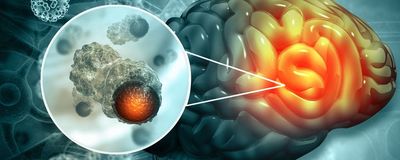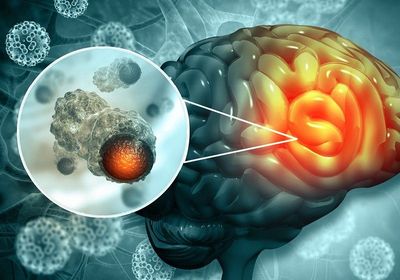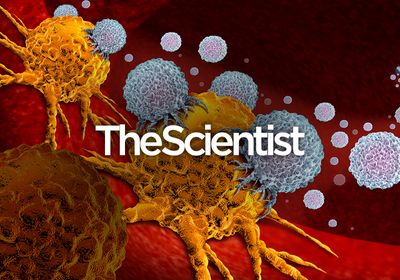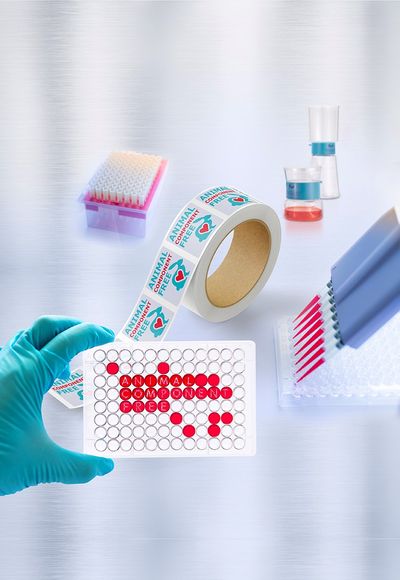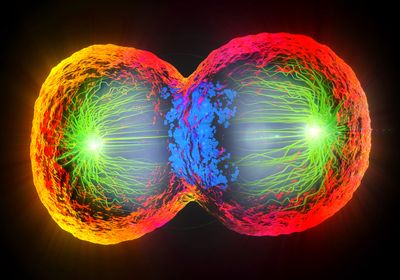ABOVE: (C) iSTOCK.com Mohammed Haneefa Nizamudeen
Glioblastoma (GBM) is the most common and malignant form of primary brain cancer. More effective treatments for GBM are direly needed, as the median survival with current therapeutic options is 15 months. One difficulty that scientists face is developing GBM treatments that overcome therapeutic resistance. GBM tumor cells invade the surrounding brain tissue and acquire resistance mediated by factors in the tumor microenvironment (TME). Conventional drug screens that rely on tumor cells grown in culture lack the TME, highlighting the need for better screening models to overcome invasion-mediated therapeutic resistance.1
We wanted to really understand how things interact. And to do that you have to build the system in which to do that.
-Jennifer Munson, Virginia Tech
Researchers use 3D models to study multiple types of cancer, but most current GBM models focus on examining one element of the TME at a time. Jennifer Munson, a bioengineer at Virginia Tech, created a model of the human GBM TME that incorporated patient-derived GBM stem cells, human astrocytes and microglia, and a biophysical force involved in tumorigenesis called interstitial fluid flow.2 The researchers evaluated their model based on four key metrics of GBM behavior—tumor cell death, invasion, proliferation, and stemness.
Focusing on these four metrics, the researchers investigated the effects of each TME element on patient-derived GBM cell outcomes (e.g. viability and proliferation), and studied the intercellular communication between GBM cells and glial cells. The researchers found that outcomes varied across seven patient-derived lines, and that including interstitial flow in their model significantly increased glioma cell proliferation and stemness. They also noted that glial cells affected the invasion and stemness of glioma cells in their tumor model, potentially related to glial expression of the cytokine CCL2.
Additionally, the researchers examined correlations between in vitro and in vivo drug responses, and explored whether their engineered system could predict in vivo survival of a mouse xenograft GBM model. In the engineered model, glioma stemness in response to drug treatment both correlated with and predicted xenograft drug response for two distinct patient-derived cell lines. Neither tumor cell invasion nor proliferation in the 3D model predicted outcomes in mice, but the percentage of cells expressing the stemness marker CD71 was predictive of mouse survival. “We thought invasion would have a much stronger correlation with some of the survival outcomes…so, that was a bit surprising,” said Munson.
This model provides a holistic approach to assess the influence of the GBM TME and compare in vitro drug responses with in vivo survival. "This is a really exciting project,” said Atique Ahmed, an associate professor in the Department of Neurological Surgery at Northwestern University, who was not involved in this study. “This opens up a possibility of doing personalized therapy. If you can really create these [tumor models]…that will allow us to help screen drugs and tailor this therapy for individual patients.”
Indeed, one hope for this engineered approach is to establish a system that would be more amenable than animal models for high throughput screening of precision medicines. “The gold standard is these xenograft models, and a big part of what we’re interested in is, do we need those?” said Munson. “So that's what we're trying to do now, is actually gather the patient data…skip the mouse and just start making these personalized systems, and then tracking patients to see what their outcomes are.” This patient-informed, 3D engineered tumor model advances efforts toward implementing precision medicine in glioblastoma treatment and overcoming mechanisms of therapeutic resistance.
References
- Xiao W, et al. Integrating the glioblastoma microenvironment into engineered experimental models. Future Sci OA. 2017;3:1-24.
- Cornelison RC, et al. A patient-designed tissue-engineered model of the infiltrative glioblastoma microenvironment. NPJ Precis Oncol. 2022;6:1-14.
